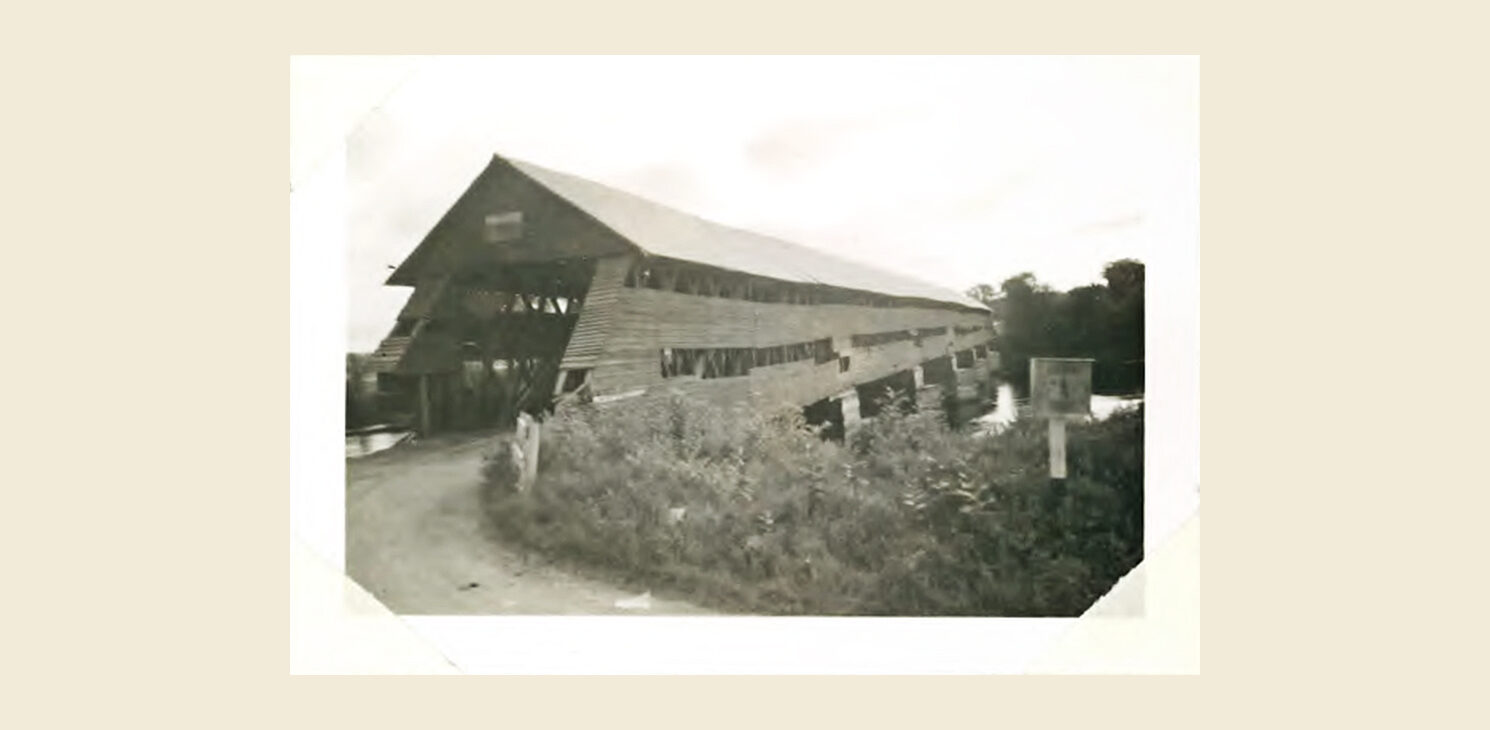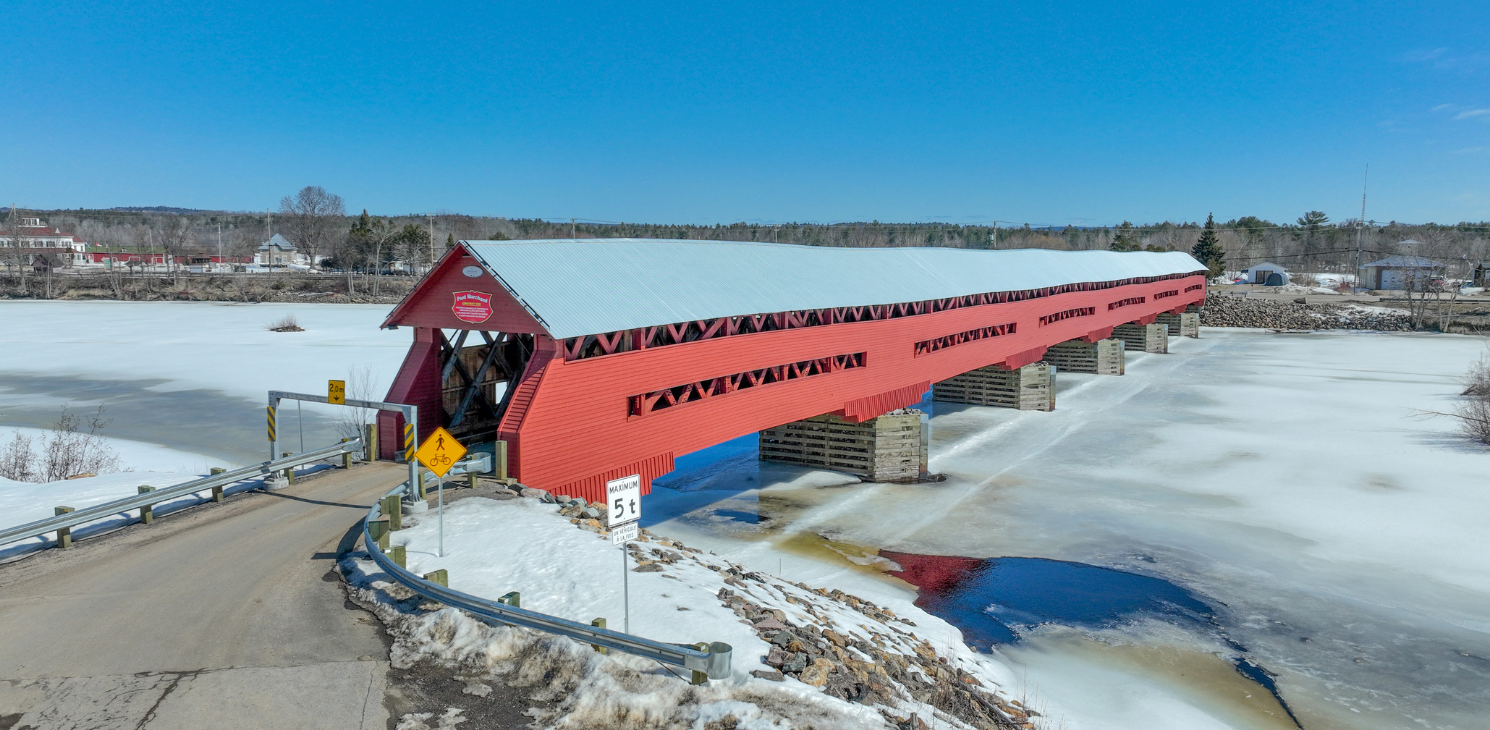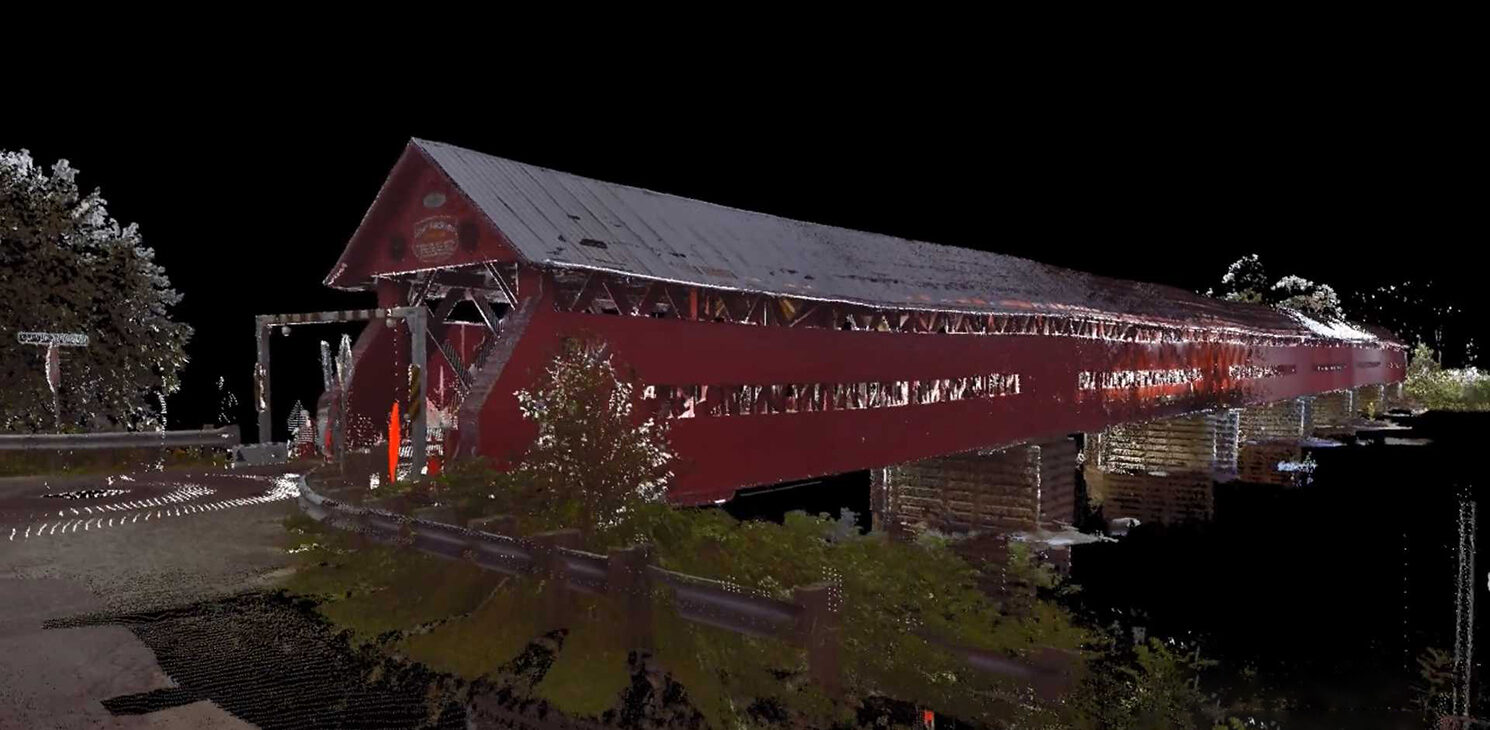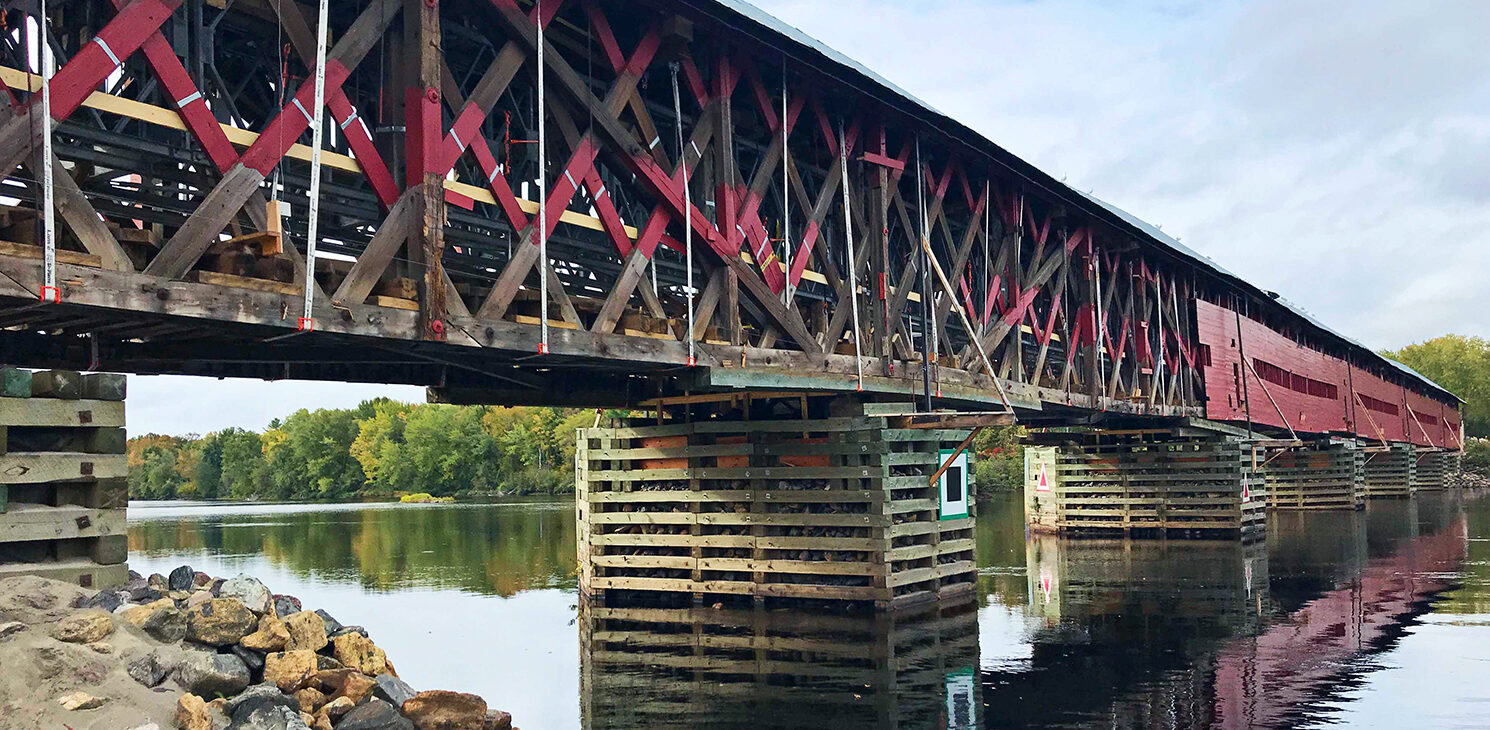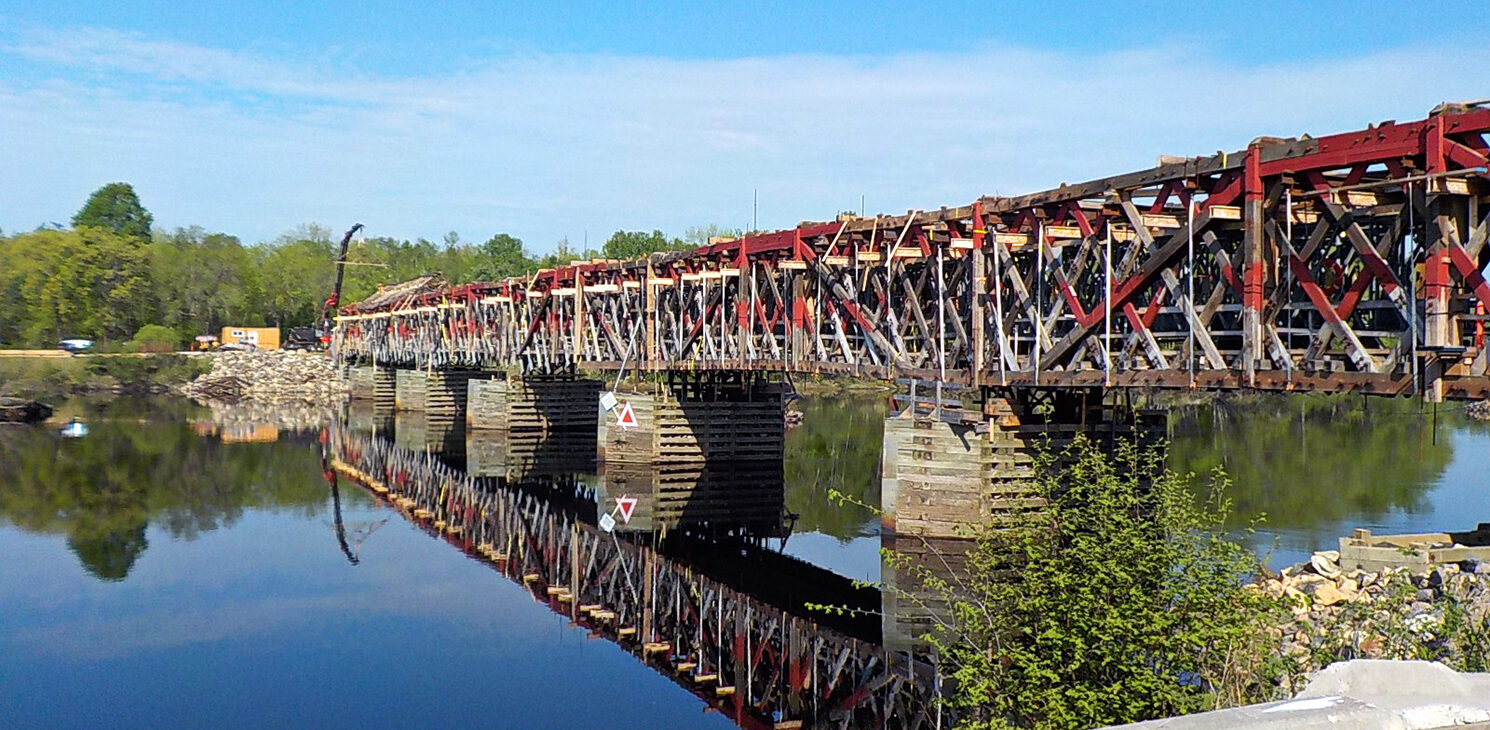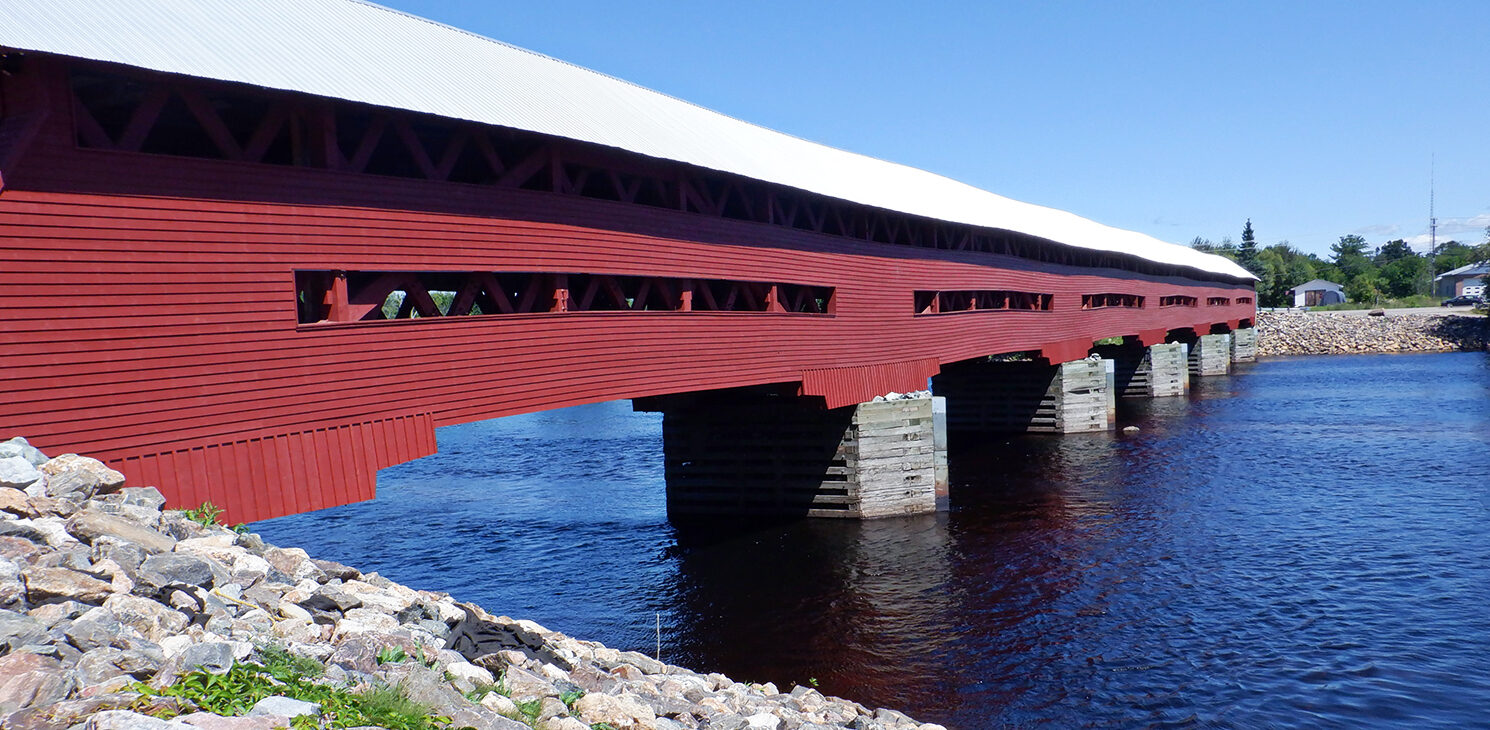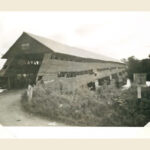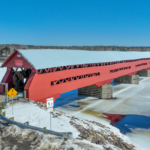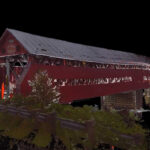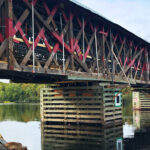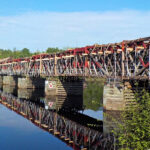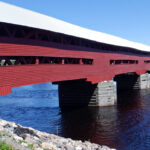Built in 1898, the Red Bridge in Mansfield-et-Pontefract, which earned its nickname because of the oxblood colour of its cladding, is the pride and joy of the residents of Pontiac. And for good reason: with a total length of 152 m, it holds the distinction of being the longest covered bridge in the province of Quebec and the second longest covered road bridge in the WORLD! Moreover, it features a first wooden structure of Town-type lattice combined with a second, also made of wood, consisting of double queen post trusses. It was this configuration, the only one of its kind in Quebec, that raised a few eyebrows at CIMA+ during an inspection conducted in 2014.
“We found major defects that were worrying and which, when combined with a reduction in the size of the piles during previous repairs, had resulted over time in a decrease in the bridge’s capacity and the appearance of other structural defects,” explains Pascal Beauséjour, partner and senior project manager, structures and bridges, at CIMA+. Just imagine: vertical deformations in the structure on a scale of up to 200 mm were detected. “This exceeds several times the generally accepted rules of thumb,” he points out.
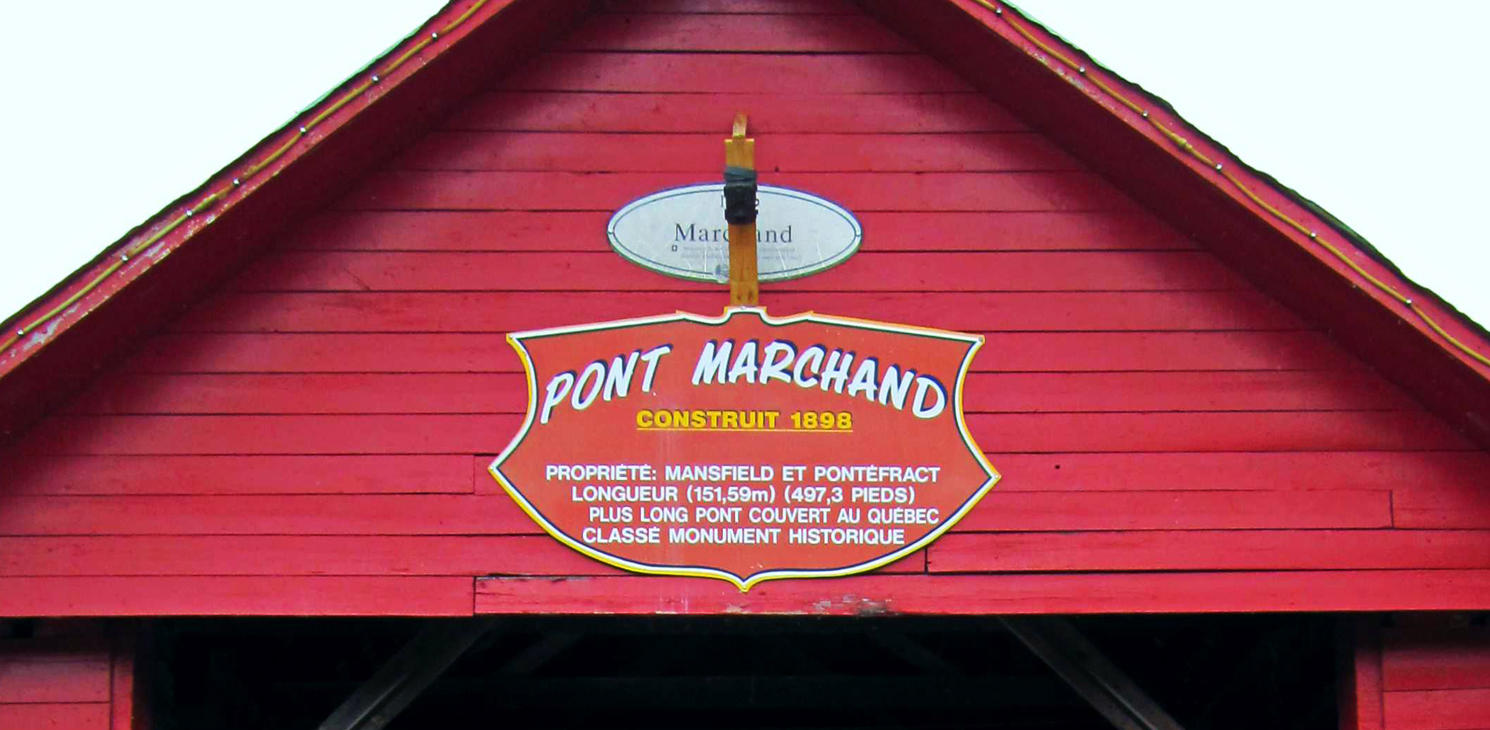
After the full closure of the bridge, Pascal Beauséjour and his colleagues set to work on the surveys, concepts and calculations in order to prepare the plans and specifications required for its restoration. A mammoth task which entailed dismantling certain distorted or damaged sections and straightening the structure, both vertically and horizontally. And they had to do this while respecting the bridge’s heritage character and the dimensions of the original parts. “It was the first time we’d been tasked with drawing up the plans and specifications for such a covered bridge. We were trying to make things work that no longer worked, particularly with regard to current building codes and the bridge’s new constraints resulting from changes made over the decades,” the engineer recalls.
Impressive engineering screws
The first step was to call on the survey, reality capture and virtual design and construction (VDC) team at CIMA+ to do a three-dimensional digitization of the Félix-Gabriel-Marchand bridge. “This was done using a handheld laser scanner with a scan speed of approximately one million points per second and a range of 60 m. It’s a bit like automated surveying,” Pascal Beauséjour explains. “We created a complete virtual 3D model that we could then use to build a structural model that would allow us to perform simulations and analyses.”
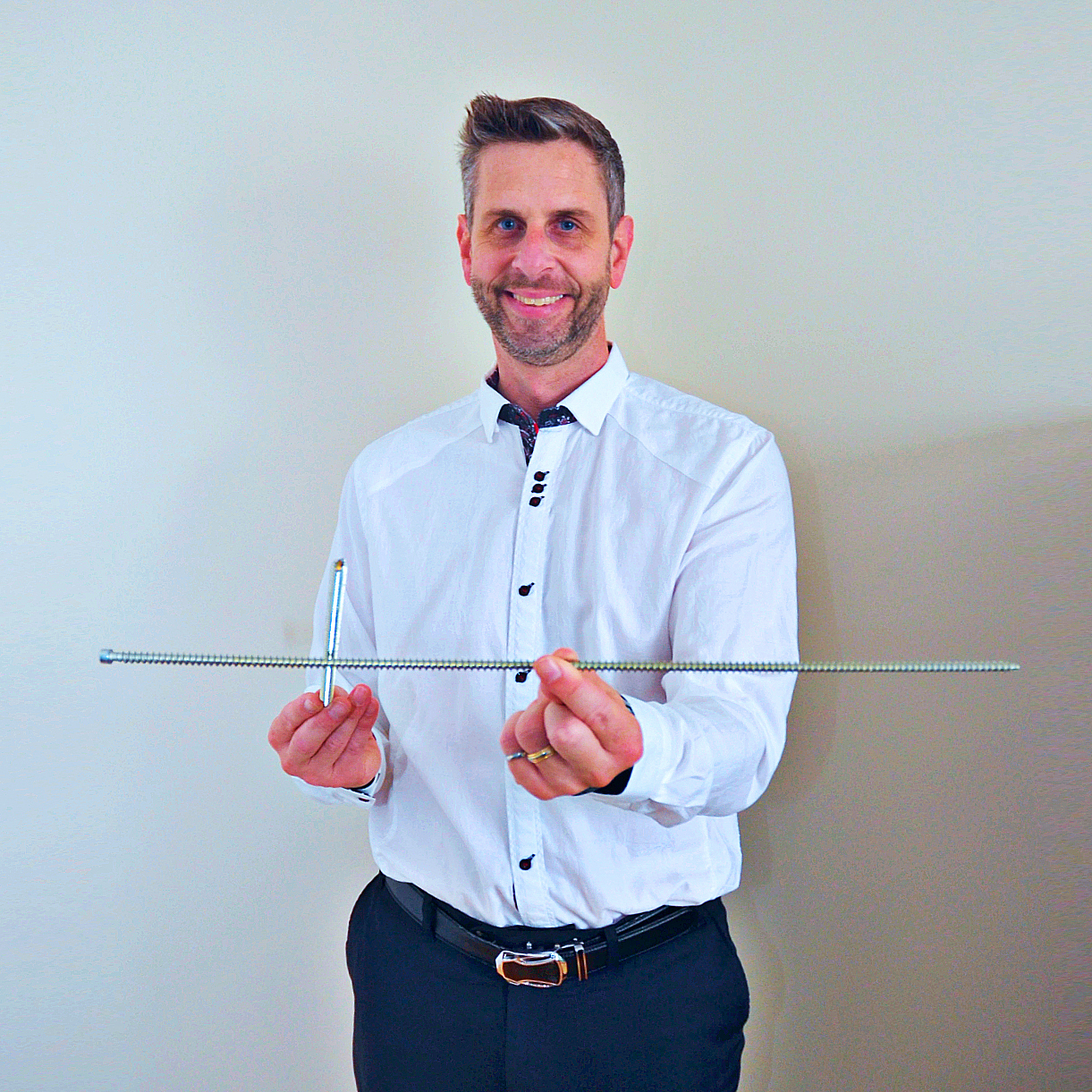
This three-dimensional modelling paved the way for substantial structural repairs and reinforcements. However, it was necessary to first ensure that the work could be carried out in complete safety on a structure that was damaged, if not to say unstable! The chosen solution was, to say the least, original: to build a temporary bridge within the bridge. “To do this, a Bailey-type prefabricated temporary support [made of steel] spanning the entire bridge was installed inside. This reduced the risks while the work was being carried out, both for the workers and this important piece of heritage itself, which we couldn’t afford to further weaken,” Pascal Beauséjour explains.
The solution adopted to strengthen the bridge’s structure was to use discreet engineering screws measuring around 600 mm in length and manufactured in Germany which, up until then, had been largely unknown in Canada. “The conventional connectors made it impossible to repair the connections in certain places. We therefore turned to these screws which, without increasing the capacity of the connections [between the parts], enabled the threaded rods and bolts to reach their full capacity by giving ductility to the wooden structure,” Pascal Beauséjour says. It is nothing short of using these screws to create “reinforced wood” which helps prevent the development of cracks around the bolts. Adding the screws can increase the reinforced structure’s capacity by a factor of about ten… Yes, 1000%! A Canadian supplier has now been distributing these engineering screws, which can be up to 1,500 mm long, in North America for almost ten years.
This innovative approach allowed the Félix-Gabriel-Marchand bridge to reopen in December 2021, much to the pleasure of the communities it links. The contractor recently completed his verification of all the assemblies, and the structure is in excellent shape. “What the CN Tower means to Toronto is what this bridge means to the towns of Mansfield-et-Pontefract and Fort-Coulonge!” Pascal Beauséjour says with a laugh. The Ministère des Transports et de la Mobilité durable du Québec (formerly known as the Ministère des Transports) has nothing but praise for CIMA+, the firm it mandated to provide the services. “This was the first time the Ministère had used these screws in one of its rehabilitation projects. There is now talk of using them in other timber projects,” the engineering expert says in conclusion.
